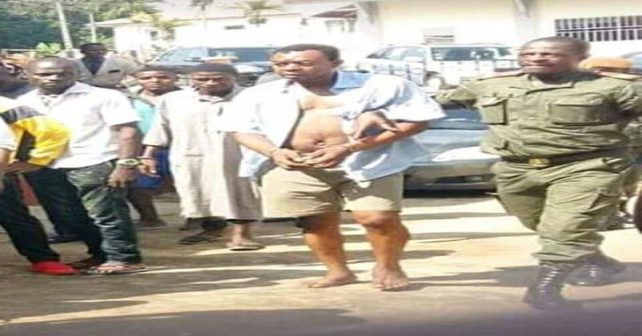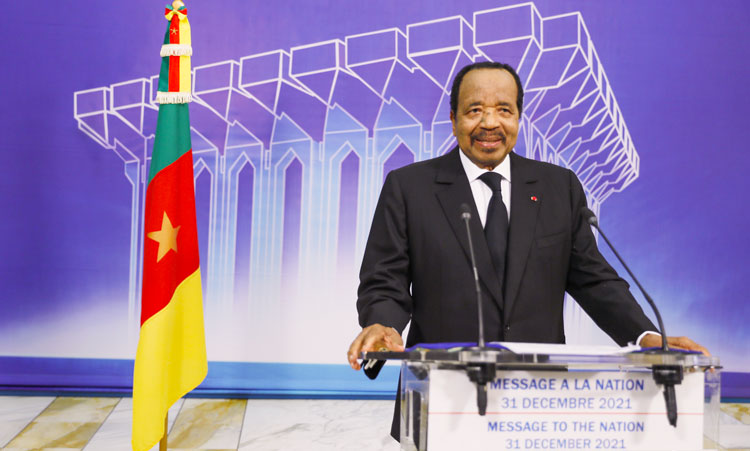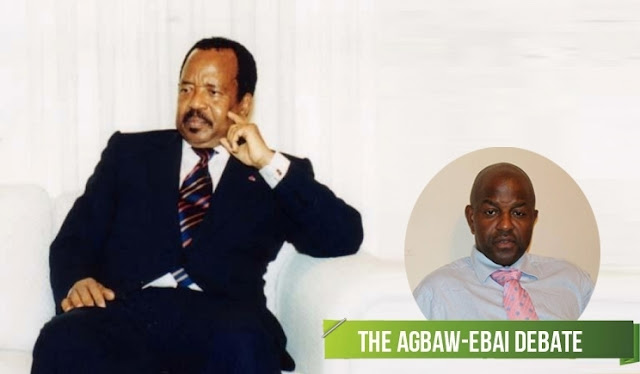Categories
Archives
- April 2025
- March 2025
- February 2025
- January 2025
- December 2024
- November 2024
- October 2024
- September 2024
- August 2024
- July 2024
- June 2024
- May 2024
- April 2024
- March 2024
- February 2024
- January 2024
- December 2023
- November 2023
- October 2023
- September 2023
- August 2023
- July 2023
- June 2023
- May 2023
- April 2023
- March 2023
- February 2023
- January 2023
- December 2022
- November 2022
- October 2022
- September 2022
- August 2022
- July 2022
- June 2022
- May 2022
- April 2022
- March 2022
- February 2022
- January 2022
- December 2021
- November 2021
- October 2021
- September 2021
- August 2021
- July 2021
- June 2021
- May 2021
- April 2021
- March 2021
- February 2021
- January 2021
- December 2020
- November 2020
- October 2020
- September 2020
- August 2020
- July 2020
- June 2020
- May 2020
- April 2020
- March 2020
- February 2020
- January 2020
- December 2019
- November 2019
- October 2019
- September 2019
- August 2019
- July 2019
- June 2019
- May 2019
- April 2019
- March 2019
- February 2019
- January 2019
- December 2018
- November 2018
- October 2018
- September 2018
- August 2018
- July 2018
- June 2018
- May 2018
- April 2018
- March 2018
- February 2018
- January 2018
- December 2017
- November 2017
- October 2017
- September 2017
- August 2017
- July 2017
- June 2017
- May 2017
- April 2017
- March 2017
- February 2017
- January 2017
- December 2016
- November 2016
- October 2016
- September 2016
- August 2016
- July 2016
- June 2016
Featured
 Prosecution of journalists in Cameroon: European Parliament says enough red flags have been ignored
Prosecution of journalists in Cameroon: European Parliament says enough red flags have been ignored  1982-2025: How long will Biya hang on?
1982-2025: How long will Biya hang on?  How Biya and Archbishop Nkea protected the sanctity of the family in Cameroon
How Biya and Archbishop Nkea protected the sanctity of the family in Cameroon  October Presidential Election: Will 92-year-old Biya be re-elected?
October Presidential Election: Will 92-year-old Biya be re-elected?  Why is Biya seeking re-election?
Why is Biya seeking re-election?
Most Commented Posts
 4 Anglophone detainees killed in Yaounde
4 Anglophone detainees killed in Yaounde
18 comments Chantal Biya says she will return to Cameroon if General Ivo Yenwo, Martin Belinga Eboutou and Ferdinand Ngoh Ngoh are sacked
Chantal Biya says she will return to Cameroon if General Ivo Yenwo, Martin Belinga Eboutou and Ferdinand Ngoh Ngoh are sacked
13 comments The Anglophone Problem – When Facts don’t Lie
The Anglophone Problem – When Facts don’t Lie
12 comments Anglophone Nationalism: Barrister Eyambe says “hidden plans are at work”
Anglophone Nationalism: Barrister Eyambe says “hidden plans are at work”
12 comments Largest wave of arrest by BIR in Bamenda
Largest wave of arrest by BIR in Bamenda
10 comments
Latest Tweets
Featured
-

Race for Etoudi: CDU condemns fake CPDM polls
-

Mobile Money drives over 5% of Cameroon’s GDP
-

40 Cameroonian nationals arrested in Ghana for internet fraud, human trafficking
-

US: Michelle Obama dismisses divorce rumours
-

Minister Laurent Esso returns to Yaoundé after medical treatment
-

Kumbo Diocese issues “urgent alert” on human trafficking surge
-

CPDM Crime Syndicate: New National Assembly building to be named ‘Paul Biya Glass Palace’
© Cameroon Concord News 2025
1, September 2018
French Cameroun soldiers tortured and killed prisoners at base used for US drone surveillance 0
Troops in the West African nation of Cameroon have tortured prisoners at a remote military base that is also used by U.S. personnel and private contractors for drone surveillance and training missions.
As the U.S. military has fortified the Cameroonian site, known as Salak, and supported the elite local troops based there, the outpost has become the scene of illegal imprisonment, brutal torture, and even killings, according to a new investigation by The Intercept and the Goldsmiths, University of London-based research firm Forensic Architecture, based on extensive research by Amnesty International. Nearly 60 victims held at Salak described to Amnesty International how they were subjected to water torture, beaten with electric cables and boards, or tied and suspended with ropes, among other abuses.
Forensic Architecture investigated conditions of detention and torture at two sites of illegal incarceration, run by Cameroon’s security forces, to accompany a new report by Amnesty International. See the full investigation here.Video: Forensic Architecture
No evidence has emerged that U.S. personnel were involved in torture, but photos and videos from Salak show U.S. soldiers and civilian contractors near the facilities where prisoners were held, and detainees testified to seeing and hearing Americans in uniform during their imprisonment.
“We can’t be 100 percent sure that Americans were aware of the torture,” said Ilaria Allegrozzi, Amnesty International’s lead researcher on a new report about abuses by Cameroonian forces. “But our evidence demonstrates that at Salak these practices occur in places that are accessible and can be visible to U.S. and other foreign personnel.”
Salak serves as ground zero for Cameroon’s fight against the Nigerian militant group Boko Haram, a campaign that the United States has thrown its full support behind. Last month, President Donald Trump sent a letter to Congress outlining current “deployments of U.S. Armed Forces equipped for combat.” In addition to Afghanistan, Iraq, Syria, Yemen, Libya, and Somalia, Trump mentioned Cameroon, where “approximately 300 United States military personnel are also deployed, the bulk of whom are supporting United States airborne intelligence, surveillance, and reconnaissance operations in the region.”
Over the last decade, the United States has devoted hundreds of millions of dollars to Cameroon (more than $111 million in security assistance since 2015) while training its elite military force and providing everything from arms to humanitarian aid to development assistance.
“We are proud of the Cameroonian Security Forces’ commitment to protecting Cameroonian citizens,” said U.S. Ambassador Michael Hoza in a speech earlier this month. Last spring, Hoza praised the conduct of Cameroon’s elite Rapid Intervention Battalion (known by its French acronym, BIR), which Amnesty specifically accuses of torture. “In their training, conduct, and leadership, the BIR exhibited all of the values we expect in our own armed forces — professionalism, protection of the civilian population, and respect for human rights,” Hoza wrote.
The new report by Amnesty International — which catalogues the cases of 101 individuals subjected to illegal incarceration, torture, or extrajudicial killing by Cameroonian security forces at multiple sites — stands in sharp relief to the ambassador’s comments and raises serious questions about ongoing U.S. support.
“During torture, they asked me in French to confess that I was a member of Boko Haram,” one former detainee told Amnesty. “They beat me with a wooden plank and a chain as they tried to force me to eat pork. I am Muslim and I don’t eat pork so I refused, and I was tortured. They beat me several times with the wooden plank, which had a nail stuck into it. I was beaten everywhere, especially on my legs and ankles. I received so many blows that I passed out.”
U.S. Africa Command did not respond to questions about whether the command was aware of reports of abuses being carried out at Salak. Multiple requests to the U.S. Embassy in Cameroon for an interview with Ambassador Hoza went unanswered, as did requests for interviews with the offices of Cameroon’s president and prime minister as well as the Cameroonian Embassy in Washington, D.C.
Between December 2013 and February 2015, two buildings appeared on the western side of Salak, and foundations were laid in the southwest corner for hangars.
“Everyone says they are Americans”
For years, the U.S. military has maintained an outpost in Douala, Cameroon, and a drone base in the remote town of Garoua. Little, however, has been reported about the U.S. facilities known as the “Salak Compound office” or the nearby “Team Maroua House Office.”
The Cameroonian airfield and military base at Salak, in the northern border region wedged between Nigeria and Chad, expanded as Boko Haram’s indiscriminate attacks on civilians increased, leaving tens of thousands across the region injured or dead and millions of others displaced, and following the April 2014 kidnapping of 276 girls from a school in Chibok, Nigeria, which generated international attention.
Satellite imagery shows the significant expansion of the base, including the construction of two buildings between December 2013 and January 2015 later described to Amnesty International by witnesses as “the Americans’ buildings.” By 2015, a U.S. Naval Mobile Construction Battalion appeared to be beefing up fortifications at the camp. Around the same time, the U.S. Defense Department arranged for Insitu, a subsidiary of the defense giant Boeing, to supply Cameroon’s military with six ScanEagle surveillance drones worth $9.3 million, according to contracting documents.
Between February 2015 and February 2017, the northwestern section of the base was expanded to make room for a ScanEagle unmanned aerial system.
Today, Salak serves as the headquarters of Operation Alpha, the BIR’s internationally backed counterterrorism campaign against Boko Haram, and an increasingly integral site for the U.S. military’s operations in West Africa.
“Maroua and nearby Salak air field are important hubs for our security assistance efforts in the region, and we regularly have small numbers of U.S. personnel (military and/or contractor) in the area supporting Cameroon’s aviation, logistics, counter-improvised explosive devices and force protection capabilities,” Capt. Jennifer Dyrcz, a spokesperson for AFRICOM, told The Intercept by email. “U.S. Africa Command does intend to assist Cameroon in refurbishing and improving Salak air field for Cameroonian use.”
Yet Amnesty International found that Salak is also used as an illegal prison to hold people detained by the BIR. The prisoners are mostly men — often military-age, often Muslim, and often members of the Kanuri ethnic minority — but women and children as young as 7 have also been held there.
“We’re not talking about real Boko Haram fighters, but about people arrested on suspicion of supporting Boko Haram, who are just ordinary people who were at the wrong place at the wrong time,” said Allegrozzi, of Amnesty International. “[The Cameroonian security forces] often arrest people on the basis of little to no evidence. These civilians are then transferred to illegal detention facilities.”
The human rights group documented pervasive use of stress positions, suspension by ropes, and water torture in addition to sleep deprivation, extraction of fingernails, burning, and electric shocks. Former detainees, their families, lawyers and others also described beatings with chains, batons, machetes, and other objects.
“In Salak, I was permanently chained up. I was only given one meal per day, and I was tortured at least three times. The first two times, men in plain clothes beat me severely all over my body with electric cables,” one former detainee told Amnesty.
Amnesty estimates that dozens of prisoners died as a result of torture and other ill treatment in detention facilities run by the Cameroonian security forces between 2013 and 2017, but the number could be far higher. Former detainees at Salak described a routine process by which corpses of those who died in group cells after being tortured were wrapped in plastic by other detainees and transported off site by BIR troops.
Multiple detainees witnessed white men, sometimes identified specifically as Americans, exercising or working in an open-air “garage” immediately south of the detention cells.
“During my detention in Salak, I saw white men there on several occasions. Most of the time, I saw them from the windows of my cell. I saw them jogging in the early morning, from the back window of my cell. … I also saw them standing or talking from the front window of the cell — the window that faced the garage,” recalled one former prisoner.
Another detainee, held from February to July 2016, told Amnesty:
Further evidence of a persistent American presence on the base comes from public social media postings by a 20-year veteran of the U.S. Air Force, now employed by Boeing subsidiary Insitu, who began working at the base this spring. Forensic Architecture discovered photographs geotagged at Salak and shared on social media by the American veteran, who did not respond to The Intercept’s requests for comment. The images offer an unprecedented window into activities at the base and line up with previously reported details about U.S. operations in Cameroon.
For instance, photos uploaded in April show a “skyhook,” which is used to land ScanEagle drones by plucking them out of the sky, as well as signal relay equipment located near a shipping container that the veteran referred to in a photo caption as “The Office.”
Top: BIR soldiers in discussion with unidentified foreign personnel. The device in the background is the “skyhook” for a ScanEagle drone. Bottom: On top of containers referred to as “The Office,” there appears to be a communications array probably linked to the ScanEagle unmanned aerial system.
In photographs posted to the veteran’s Facebook account in May, white men can be seen donning night vision goggles alongside members of the Centre Anti-Terroriste, a training program associated with BIR. (Publicly available contract information shows that in 2015 and 2016, the U.S. military purchased night vision goggles for Cameroonian forces.)
A video posted that same day by the veteran shows U.S. and Cameroonian forces playing a game of night vision soccer on a tree-lined square at the south side of the Salak base. At least one person can be heard speaking English with an American accent.
It’s impossible to know if all the white men on the base were Americans and which Americans were active duty military personnel. “What I can say is a small number of contractors and U.S. forces rotate in and out interminably based on mission,” AFRICOM’s Jennifer Dyrcz replied when asked if U.S. personnel were living on the Salak base.
Ilaria Allegrozzi of Amnesty International says there is no question that Americans serve there. “This was not challenged by the U.S.,” she says, referring to conversations with Ambassador Hoza and other U.S. officials regarding the U.S. troop presence at Salak. “Our evidence show that American personnel is present at Salak. They’re there.”
Spatial analysis by Forensic Architecture, utilizing satellite imagery, open-source material, and 3D modeling to geolocate the Air Force veteran’s photos, confirms the precise areas visited by Americans. Combined with interview material obtained by Amnesty International, the group’s work indicates Americans — and possibly French military personnel and Israeli contractors — have apparently unrestricted access to Camp Salak, and have regularly been present at, or very near, sites where detainees have been incarcerated or tortured.
Such abuses should come as no surprise to the U.S. government. The State Department’s Bureau of Democracy, Human Rights, and Labor has long chronicled human rights violations in line with Amnesty International’s findings. In 2007, the State Department’s annual human rights report noted that “more than 100 persons were reportedly beaten after members of the Rapid Intervention Brigade arrested them in and around Maroua, in the Far North Province. The victims were detained for several days at Salack [sic], where many of them were stripped naked, blindfolded and beaten, then held in a cell with water on its floor.” In every State Department human rights report since 2010, BIR troops have been cited for assaults, killings, and other outrages against noncombatants. Last year’s report specifically cited previous investigations by Amnesty International into torture and deaths at Salak.
The United States has a long history of supporting and working with foreign forces accused of torture, and recent events suggest the practices continue. Just last month, the Associated Press reported that U.S. military interrogators were collaborating with forces from the United Arab Emirates who tortured detainees in Yemen. A video also recently surfaced that appears to show U.S.-allied troops in Syria torturing prisoners.
And from the Philippines to Vietnam to Iraq, Americans have engaged in such acts themselves. Following the 9/11 attacks, the United States began employing methods of torture — including water boarding and stress positions — under the euphemism “enhanced interrogation.” According to the new Amnesty International report, when researchers confronted a representative of Cameroon’s minister of defense with accounts of prisoners being bound, suspended by ropes, and beaten, he claimed the practice was “exploitation approfondie.” Translation: enhanced interrogation.
Culled from The Intercept